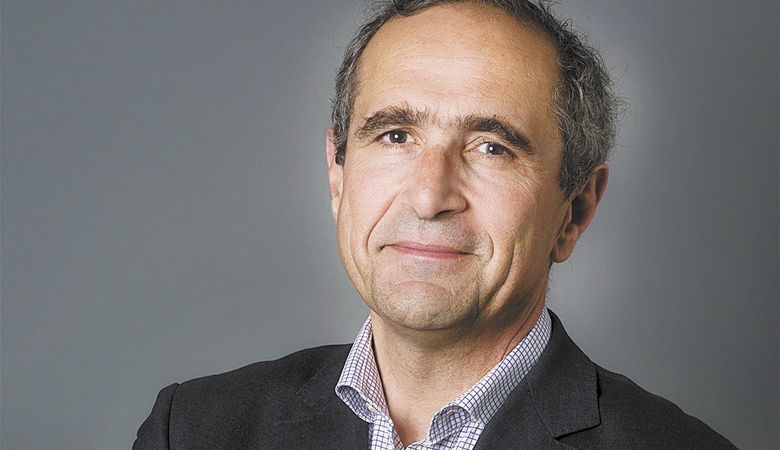Bollingers Buy Ponzi
Bizot discusses family’s purchase of iconic winery
The Bollinger family, owners of Champagne Bollinger, Delamain Cognac and three other historic French estates, announced their purchase of the Ponzi Vineyards brand April 7. The sale includes the winemaking and hospitality facilities in Sherwood, as well as the Avellana, Abetina and Madrona vineyards.
In 1970, Dick and Nancy Ponzi established their winery alongside other early Willamette Valley winegrowers. For decades, the family has been expanding the vineyards and winery facilities, incorporating innovation into its winemaking, viticulture and hospitality.
Under the leadership of a yet-to-be-named CEO, second-generation Anna Maria Ponzi will continue to lead sales and marketing over the transition period. Her sister, Luisa Ponzi, will remain as director of viticulture and winemaking.
The Ponzi family will retain their original estate vineyard, along with the Aurora, Issimo and Paloma vineyards. The family agreed to a long-term contract to grow and sell their grapes to Ponzi Vineyards.
Etienne Bizot, great-nephew of Champagne legend Madame Lily Bollinger, is currently the chairman and CEO of Société Jacques Bollinger (SJB), the family holding group. He spoke with me from Paris to discuss his family’s first-ever purchase of an American winery and what the future holds for Ponzi Vineyards.
Your family owns wineries in Champagne, Burgundy and the Loire Valley. Why buy an American winery?
EB: The United States is the first export market in value for Champagne, Sancerre and Cognac. For Burgundy, it is maybe second or third. The United States market is also the fastest growing market in the world, in terms of high-quality wine consumption. That captured my attention.
The conviction I have is the best way to disrupt the important market is to anchor our family in the U.S., which means to acquire a winery, to have our feet on the ground. The best way to understand what American consumers want is to be close to them.
How long did it take you to decide on Ponzi Vineyards?
EB: We’ve been looking at an acquisition in the United States for the last three or four, maybe five, years. Our family does not make choices so quick. That’s how we work. Any move we make has to be carefully studied.
I’ve been visiting different wineries during that time, but only on the West Coast. Two-and-a-half years ago, I visited Ponzi Vineyards as a simple tourist. I bought my glass of wine and my piece of cheese and sat down on the terrace. The people were very nice, and it was a lovely fall day, with leaves turning color. It was a wonderful sight.
Besides that autumn ambiance, what attracted you to Ponzi Vineyards?
EB: With Ponzi, we found a nice fit with our DNA and strategy because of Pinot Noir, because of climate and the fact this is a legacy winery with a long history in Oregon. If not for COVID, they would have celebrated their 50th anniversary last year. Fifty years for a winery. Wow. We will, of course, figure out a way to celebrate such an important event, if not this year, the next.
I also like the proximity of the family to the terroir. They’ve been very active these past few years drawing attention to their Laurelwood soils. At the end of the day, we need to promote terroir and the Ponzi family is doing just that. We want to promote the Laurelwood AVA and Ponzi is right in the middle of it, so they are the proper winery for us. I was also quite impressed with their gravity-flow winery.
Will you make sparkling wines in Oregon?
EB: No, I think you need to capitalize on what a winery is good at, and this winery is good at producing Pinot Noir and Chardonnay. I do believe there are maybe some changes to be done, but we will see in terms of the timing. It’s going take time for us.
My question — and it is a question for which I have no answer at the moment because I do not know the U.S. sparkling wine market so well — relates to the positioning of these wines. For me, these wines aren’t very well-positioned at a price of $25 or $30. I know how much it costs to produce a sparkling wine, and this surprises me.
That positioning should be reviewed, and if we do go into sparkling wine here, we’ll do it in our way, which means proper positioning, which, to be frank, I do not understand now. That may be the main reason why we’re very cautious about moving on sparkling wines in Oregon.
Do you have any plans to increase production or prices at Ponzi Vineyards?
EB: In terms of objectives, we are looking more at value and visibility than volume. Maybe we have some efforts to be done in terms of positioning the Ponzi wines on the market. I’m not saying increasing price; I’m talking about positioning the wines at the right value. When I say value, I mean the proper value for the consumer. If the consumer has a perception of the value of the wines, that is what we have to make.
Will you be looking to increase the sales of Ponzi wines in other countries?
EB: Our priority is to increase the visibility of the Ponzi brand in the U.S. market. Of course, as soon as I informed our agents all over the world that our family has expanded its business in the U.S., one out of two showed some interest in the Ponzi wines to be distributed. So, without any doubt, we will do some business.
We have to sit down past the big impact of communications and afterward work with them to see whether they will be interested and how to move forward. If we can place a good bottle of Ponzi wine in the restaurants outside of the U.S., we will do it.










